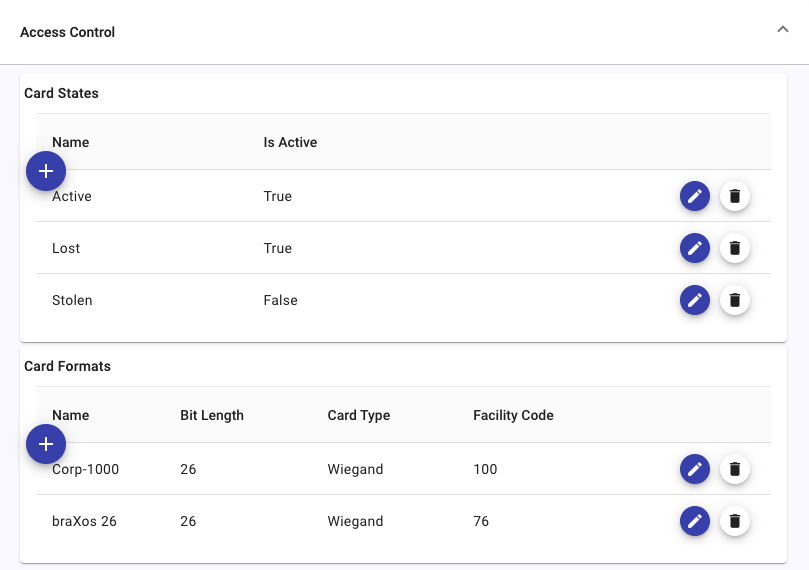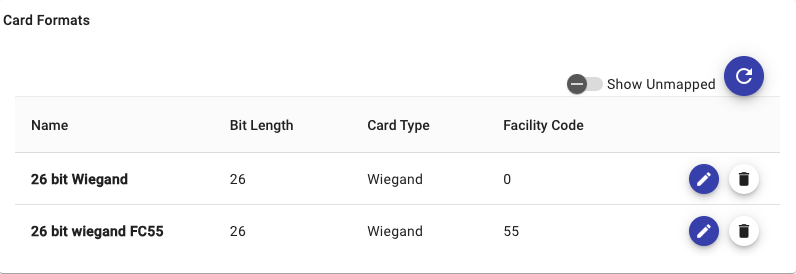The Access Control settings panel allows the Administrator for an Ascent™ or Concert™-licened building to manage credentialing options.
For Ascent™-licensed buildings, the Card States user interface allows the
Administrator to define the set of card status values that a credential may be in. When defining the
state, the Administrator will also indicate whether a credential in that state ought to be
considered active or not.
Example states include Lost, Stolen, Temporary.
For Ascent™ and Concert™-licensed buildings, the Card Formats user interface allows the Administrator to define the set of card format values that a credential can use. These definitions allow for the proper interpretation of the raw card data as it is presented by users at the elevator kiosks. The name is then referenced when a credential is issued. The characteristics of a card format are dependent upon the card type. Typical Wiegand credentials are composed of a facility code and a card number. The facility code is a constant value across a set of card stock issued to card holders, while the card number changes with each credential. The card stock vendor or security integrator should be able to supply the Administrator with the appropriate values to input when defining the card format to the system.
Like Floor Access Groups, in a Concert™-licensed building, Card Formats are "linked" to the card formats specified in the access control system by name. A "linked" card format will be displayed in bold, whereas an "unlinked" card format will be displayed in light grey. For a credential to be used successfully at the kiosk, the card format must be linked and its definition must match the definition in the access control system:
When the button is tapped, Concert™ will (re)synchronize the card
formats from the access control system to LiftOff Commander so that they may be linked.

